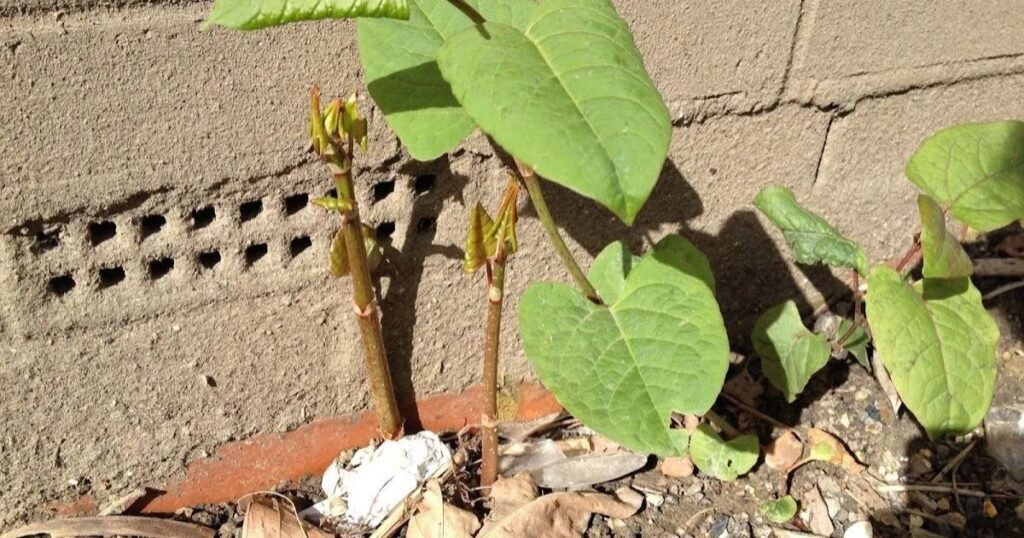A Comprehensive Guide to Lawn and Garden Weed Control
Maintaining a beautiful and healthy garden can be a rewarding experience, but it also comes with its fair share of challenges, particularly when it comes to dealing with unwanted weeds. Whether you’re a seasoned gardener or a novice green thumb, identifying and managing common UK garden weeds is crucial for keeping your outdoor space looking its best. In this comprehensive guide, we’ll explore the 10 most prevalent weeds found in UK gardens and provide essential lawn and garden weed control tips.
The ten most common UK garden weeds
Weeds can be a persistent nuisance, but understanding their characteristics is the first step toward effective weed management techniques. Here are the 10 most common UK garden weeds you should be aware of:
1. Chickweed
Chickweed is a low-growing, mat-forming weed that can quickly take over your garden if left unchecked. Recognizable by its small white flowers and slender stems, chickweed thrives in damp soil and can produce an astonishing 15,000 seeds per plant. Prompt removal of young chickweed plants is crucial to prevent them from spreading and taking over your garden.
2. Fat Hen
Also known as lambs quarters or pigweed, Fat Hen is a common sight in vegetable gardens and compost heaps, thanks to its affinity for rich soil. With broad leaves and green-white flowers, this weed can grow up to 27cm tall and should be removed while in its seedling stage to prevent its seeds from lying dormant in the soil for up to 20 years.
Also read this post:About Beech Wood
3. Groundsel

Groundsel is a tall weed that can reach up to 22cm in height, with flowers that resemble small dandelion heads. A single plant can produce hundreds of wind-dispersed seeds, making it a formidable foe in your garden. Vigilant hoeing and removal of flower heads are essential to prevent groundsel from spreading throughout your garden.
4. Couch Grass
Also known as Twitch or Scutch Grass, couch grass may appear harmless at first glance, but it has a complex network of tough roots that can quickly take over borders and flower beds. Gently removing the entire root system with a garden fork is crucial to prevent it from tangling around the roots of your desired plants.
5. Goosegrass
Goosegrass, or Sticky Weed, is a tall, messy weed that can rapidly take over flower beds, sticking to other plants and clothing, and aiding in seed dispersal. While easy to pull up by hand, wearing gloves is recommended to avoid the sticky stems.
6. Dandelions
Dandelions are perhaps one of the most recognizable weeds, with their bright yellow flower heads and fluffy seed heads. While they provide a valuable food source for bees, dandelions can quickly become invasive in lawns and gardens. Hand-digging to remove the entire taproot and regular monitoring for re-emerging plants are essential for effective dandelion control.
7. Hairy Bittercress
Don’t let the small stature of Hairy Bittercress fool you – this 3-5cm high plant with tiny white flowers can quickly spread through its explosive seed dispersal mechanism, launching seeds up to a meter away. Keep a watchful eye for it in cool, moist areas, and containers, and remove it promptly to prevent it from taking over your garden.
8. Prickly Milk Thistle

Also known as Sow Thistle, this weed can grow up to 90cm tall and produce hundreds of seeds per plant. It thrives in dry, shaded areas and can easily hide behind taller plants, making early identification and removal crucial. Ensure you remove the entire taproot to prevent regrowth.
9. Oxalis
Oxalis, or Creeping Wood Sorrel, is a low-growing plant with tiny yellow flowers and green or dark purple leaves. While it may appear attractive, it can quickly multiply and invade your garden if left unchecked. Larger, less invasive varieties are often sold as houseplants, so exercise caution when introducing them to your outdoor space.
10. Bugloss
Bugloss, also called Viper’s Bugloss or Green Alkanet, is an attractive weed with tiny blue flowers. However, its ability to spread rapidly through seed dispersal and its deep, strong roots make it a potential nuisance in damp areas like ponds. Digging deeply to remove all roots and monitoring for new seedlings is crucial for effective bugloss control.
Three dangerous weeds
While most weeds are simply unsightly and invasive, some can pose serious threats to the environment and even human health. Here are three particularly dangerous weeds to be aware of in the UK:
1. Himalayan Balsam
Introduced as an ornamental plant by Victorian gardeners, Himalayan Balsam is now considered an invasive species that can quickly outcompete and wipe out native plant life. It is illegal to grow or move soil containing its seeds, and any sightings should be promptly dealt with by pulling up the entire plant and burning it (never composting or placing in green waste bins).
2. Japanese Knotweed

Japanese Knotweed is a notoriously invasive weed that can cause significant damage to buildings, foundations, and infrastructure by growing through concrete and piping. It is illegal to allow this weed to spread, and its presence must be declared when selling a property. Due to the strict regulations surrounding its removal and disposal, it is best to seek professional assistance when dealing with Japanese Knotweed infestations.
3. Giant Hogweed
Giant Hogweed is a potentially dangerous weed, as its sap can cause severe burns and make the skin extremely sensitive to sunlight. If you come into contact with the sap, wash it off immediately, seek medical advice, and avoid sunlight for a few days. This weed is primarily found near waterways, as its seeds are spread by water, and professional assistance may be required for safe removal and disposal, potentially involving the use of weed killers.
Garden Weed Control and Prevention Tips
While identifying and understanding the characteristics of common UK garden weeds is essential, implementing effective weed control methods is equally important. Here are some garden weed control and prevention tips to keep your outdoor space weed-free:
1. Mulching: Applying a thick layer of mulch around your plants can help suppress weed growth by blocking sunlight and preventing seeds from germinating.
2. Hand-pulling: For small infestations, hand-pulling weeds before they go to seed can be an effective control method. Ensure you remove the entire root system to prevent regrowth.
3. Hoeing: Regular hoeing can help remove young weed seedlings before they become established, disrupting their growth cycle.
4. Corn gluten meal: This organic product can be applied to lawns and gardens to prevent weed seeds from germinating, making it an eco-friendly weed prevention method.
5. Proper lawn care: Maintaining a healthy, dense lawn can help crowd out weeds by eliminating bare spots where they can take root.
6. Weed barriers: Using landscaping fabric or other weed barriers in garden beds can help prevent weed growth while allowing water and nutrients to reach your desired plants.
7. Proper plant spacing: Adequate spacing between plants can reduce competition for resources and minimize areas where weeds can establish themselves.
8. Vigilance: Regular monitoring and prompt removal of weeds before they go to seed can significantly reduce their ability to spread and take over your garden.
Conclusion
Identifying and managing common UK garden weeds is an essential part of maintaining a beautiful and healthy outdoor space. By understanding the characteristics of the 10 most prevalent weeds, as well as the dangers posed by invasive species like Himalayan Balsam, Japanese Knotweed, and Giant Hogweed, you can take proactive steps to control their growth and protect your garden. Remember, a combination of preventive measures, manual removal techniques, and proper lawn and garden maintenance can go a long way in keeping your outdoor oasis weed-free and thriving.
FAQs:
What is the most common garden weed in the UK?
According to the Royal Horticultural Society, the most common garden weed in the UK is the dandelion (Taraxacum officinale).
How can I identify common UK garden weeds?
You can identify common UK garden weeds by their leaves, flowers, and growth habits. For example, dandelions have jagged leaves and yellow flowers, while clover has trifoliate leaves and pink or white flowers. You can also consult a weed identification guide or seek advice from a gardening expert.
What is the best way to control common UK garden weeds?
The best way to control common UK garden weeds is through a combination of cultural, mechanical, and chemical methods. Cultural methods include maintaining a healthy lawn through proper mowing, watering, and fertilizing. Mechanical methods include hand-pulling or digging up weeds. Chemical methods include using herbicides, but be sure to follow safety guidelines and use them responsibly.
How can I prevent common UK garden weeds from growing in my garden?
You can prevent common UK garden weeds from growing in your garden by maintaining a healthy lawn, using mulch or groundcover, and removing weeds as soon as they appear. You can also use pre-emergent herbicides in early spring to prevent weeds from germinating. Additionally, consider using physical barriers, such as landscaping fabric, to prevent weeds from growing in specific areas of your garden.











